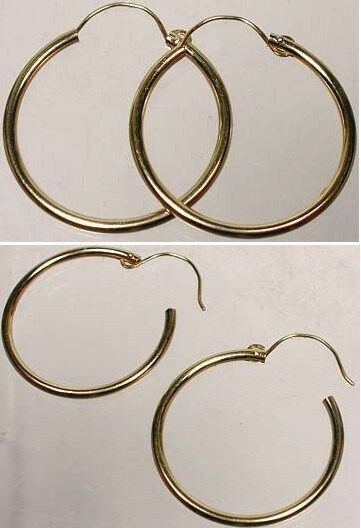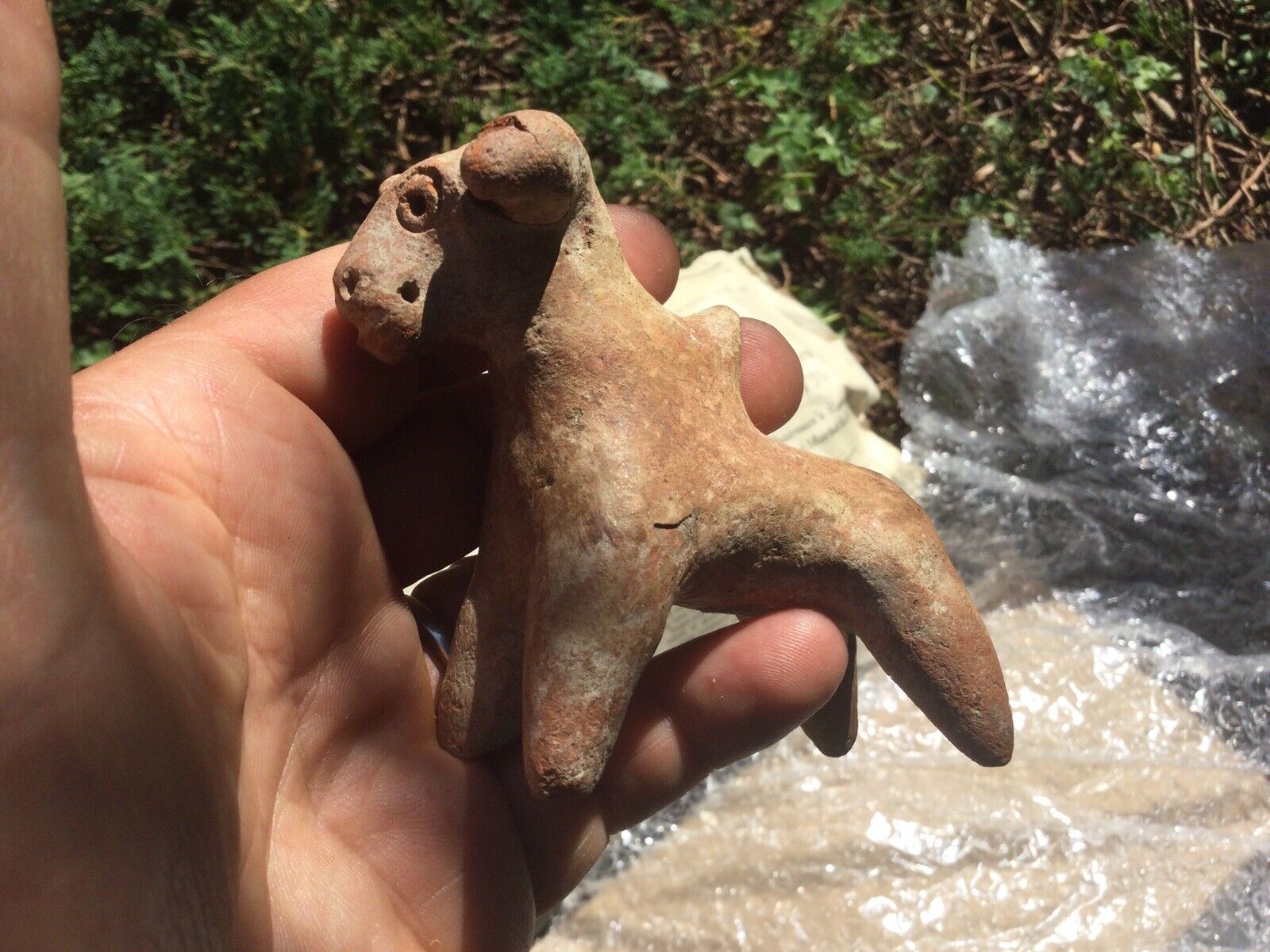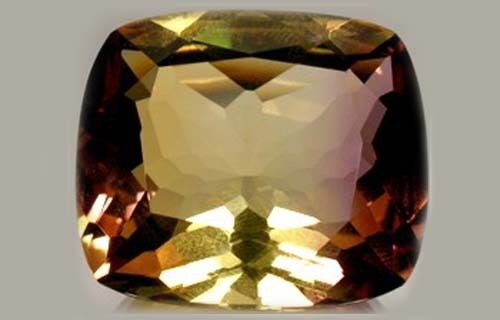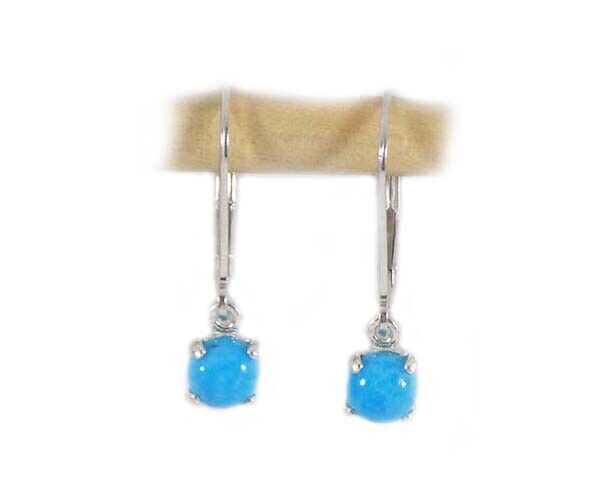-40%
19thC Antique 1 1/3ct Bavarian Spessart Ancient Hebrew Aaron Christ Blood Amulet
$ 95.03
- Description
- Size Guide
Description
Hand Crafted Antique Nineteenth Century Genuine Natural Bavarian One and One-Third Carat (Plus) Richly Hued Vibrant Bright BloodRed Spessartite Garnet Faceted Oval.CLASSIFICATION:
Spessartite Garnet Faceted Oval.
ORIGIN:
Spessart, Bavaria. 19th Century.
SIZE
: Length: 7 1/2mm. Width: 6mm. Depth: 3 1/2mm. All measurements approximate.
WEIGHT
: 1.38 carats.
NOTES
: Upon request we can set your gemstones as a ring, pendant, or as earrings (click
here
for more information).
DETAIL:
Garnet figured prominently in many religions. Ancient Christians regarded the blood-red garnet to be symbolic of Christ’s blood sacrifice. According to ancient Hebrew mythology, a giant garnet provided interior lighting for Noah's Ark. It is also believed that garnet, described as “nopek”, was one of the twelve gemstones described in the Bible in Exodus 28:17-20 as adorning Aaron’s breastplate, representing the twelve tribes of ancient Israel. The Koran holds that the garnet illuminates the Fourth Heaven of the Moslems. The ancient Persians regarded garnet as a royal stone, and only royalty was allowed to possess the gemstone. To the Anglo-Saxons, garnet was a cherished treasure. Ancient cultures including the Celts, Greeks, Hebrews, Persians and Romans all highly valued garnet.
Here is a gorgeously colored richly hued, sparkling blood red garnet. This particular species of garnet is known as "Spessartite", and is so named after its original source of Spessart, Bavaria. Hand crafted by a 19th century Russian artisan, part of an heritage renown for the production of the elaborate gemstones and jewelry of the Czars of Medieval, Renaissance, and Victorian Russia. Originally used in indigenous jewelry, this is a very pretty semi-precious gemstone, with highly a desirable, uncommon, beautiful rich, vibrant, almost neon blood red hue with spectacular brilliant Ferrari red flashes of fire. It possesses great character, and wonderful tone and color, and given the fact that Spessartite Garnets are rarely found in transparent gemstone quality material, a very exceptional specimen.
It is certainly no less than eye clean, a nice quality semi-precious gemstone. It is not to suggest it is absolutely flawless, but to the eye - even in these photo enlargements here - you can see it is very clean and without discernible blemish. Spessartite garnets are very uncommon, and the original source of these gemstones in Bavaria no longer produces them. Given the very substantial size of this specimen, as richly colored Spessartite garnets go, uncommon as they are, this is a pretty nice specimen. Under magnification the gemstone shows the unmistakable characteristics of having been hand crafted. The coarseness of the 19th century finish is considered appealing to most gemstone collectors, and is not considered a detriment, or detract from the value of a gemstone.
These characteristics are not only expected of hand-finished gemstones, most serious collectors consider such gemstones more desirable, possessed of greater character and uniqueness when compared to today's cookie-cutter mass-produced machine-faceted gemstones. Unlike today's computer controlled machine produced gemstones, the cut and finish of a gemstone such as this is the legacy of an artisan who lived two centuries ago. For most, the unique nature and character of antique gemstones such as this more than makes up for included imperfections which by and large, are only visible under magnification.
This gemstone possesses superb luster and sparkle, and to the eye is completely transparent, but it is not absolutely flawless. True, the blemishes it possesses are not visible to the naked eye, and the gemstone can be characterized at a minimum, to use trade jargon, as "loupe clean". To the eye it is indeed flawless; however magnified 500%, as it is here, you might be able to just barely pick out one or two slight imperfections within the gemstone, barely perceptible even at such high magnification. Of course the same may said about almost any natural gemstone. An absolutely flawless gemstone simply is not the rule in nature. Most absolutely flawless gemstones will upon close examination be revealed to be synthetic. Naturally these characteristics are not only expected of hand-finished gemstones, you must also consider that two centuries ago the mining techniques prevalent did not allow the ultra deep mining operations which are so common today.
Keep in mind that two centuries ago mankind was more or less limited to surface deposits or near surface deposits of gemstones. Higher quality gemstones which today are routinely mined from beneath hundreds of meters, even kilometers beneath the earth's surface, were simply inaccessible then. For these reasons antique gemstones must be appreciated as antiques first, gemstones second. The relatively superlative quality of contemporary gemstones routinely mined from deep beneath the earth's surface today were simply not accessible two centuries ago, or at least, only rarely so. However for most, the unique nature and character of antique gemstones such as this more than makes up for minute blemishes which by and large, are (if at all) only visible under high magnification.
SPESSART GARNET HISTORY:
Spessartite is not as common as most other Garnets, and it is usually not found as a transparent, gemstone quality specimens. Originally found in Spessart, Bavaia, its occurrences remain very limited when contrasted with other varieties of garnet. When absolutely pure it is bright orange, the color derived from manganese and aluminum. But an increase in the iron content makes the stone darker orange to red. It is also known as “Spessartine”, which is the word for “forest” in German. In Renaissance Europe it was believed to assist in analytical abilities and self-exploration. It was also used in the treatment of lactose intolerance and calcium mal-absorption.
The name Garnet is derived from the Latin for pomegranate, "grantum", because crystals in rock reminded early aficionados of pomegranate seeds. However in ancient times garnet was also known as “carbuncle”. Mankind has used garnet as ornamentation for many thousands of years. Archaeologists recently found a garnet bead necklace worn by a young man in a grave that dates back to 3000 B.C. Garnet was used in earliest pre-dynastic Ancient Egypt. Excavations in Egypt have uncovered garnet jewelry dating back to 3100 B.C., garnet being used to construct necklaces for Pharaohs. In the ancient Roman world, it was not only popular with the Romans themselves (particularly for the carving of intaglios for signet rings), but also with the Germanic (“barbarian”) tribes in Northern Europe bordering the Roman Empire. Garnet was also prominently featured in the magnificent cloisonné inlay jewelry found in sixth and seventh century burials in England at the Anglo-Saxon site of Sutto Hoo, and was also popular with the other peoples of ancient Britannia, including the Celts, Franks, and Normans. According to historical accounts, the King of Saxony is said to have had a garnet of over 465 carats.
Due to its red color, ancient cultures associated garnet with blood, and thus garnet was thought to stop bleeding or bloodshed between enemies. Some primitive cultures believed that garnets could not only be used to stop bleeding, but would also cure inflammation. Ancients also believed that garnet was useful to resist melancholy and warn off evil spirits, especially spirits of the night, which were referred to as demons and night phantoms. The ancients also believed that a garnet could give its wearer guidance in the night, allowing them to see when others could not. Garnet was worn for protection when traveling, as garnet was believed to warn the wearer of approaching danger. The Persians considered garnet a royal stone, as did the Russians in Imperial times. Asian and North American Indian tribes used garnets as bullets, believing the stone would inflict fatal wounds. Ancient Christians regarded the blood-red garnet to be symbolic of Christ’s sacrifice. The Koran holds that the garnet illuminates the Fourth Heaven of Islam. The Greeks said it guarded children from drowning, and it was also thought to be a potent antidote against poisons. According to historical accounts, the Greek Philosopher Plato had his portrait engraved on a garnet by a Roman engraver. And according to Greek myth, garnet is symbolic of a quick return and separated love, since Hades had given a pomegranate to Persephone before she left him to ensure her speedy return. Therefore, Garnet was often given to a beloved one before embarking on a trip, as it was believed to heal the broken bonds of lovers.
In medieval times, garnet was thought to cure depression, protect against bad dreams, and relieve diseases of the liver, as well as hemorrhages. It was also believed that a garnet engraved with the figure of a lion was an all around effective charm that would protect and preserve health, cure the wearer of all disease, bring honors, and guard from all the possible perils of traveling. The wearing of a garnet talisman was also believed to protect against the plague (“Black Death”), lightening strikes, and was believed to change color so as to warn the wearer of impending danger. The Crusaders set Garnets into their body armor, believing the protective power of the stones would lead them to safety. From the 16th through 19th centuries, Bohemia, now a part of Czechoslovakia, was a tremendous source of garnet, and at one time, particularly in the Victorian Era, cutting, polishing, and mounting garnets was a very rich industry in that country. Many Bohemian castles and churches had magnificent interiors decorated with garnet. The different varieties of garnet are found in almost all colors except blue. Brown, red, green, yellow, black, and colorless stones are the most common. Darker gemstones are usually opaque, and light ones may be transparent or translucent. The best known members of the Garnet family are the deep red varieties, the Pyrope and Alamandite. The Pyrope derives its name from the Greek word meaning "firelike". It was the Pyrope Garnet that figured in the ancient Talmudic legend, which held that the only light in Noah's Ark was supplied by an enormous red garnet.
Through out history, gemstones were believed capable of curing illness and providing protection. Found in Egypt, dated 1500 B.C., the "Papyrus Ebers" offered one of most complete therapeutic manuscripts containing prescriptions using gemstones and minerals. In the eastern civilizations of China, India, and Tibet, gemstones were not only valued for their medicinal and protective properties, but also for educational and spiritual enhancement. Today these traditional cultures regard garnet as a stone of "good health", capable of balancing an individual's energy, stimulate desires, uplift attitude, and increase popularity. Medicinally garnet was long believed to cure heart palpitations, varicose veins, lung diseases, and various diseases of the blood. It was believed to stimulate metabolism, purify and reenergize the blood, heart and lungs, and was used to treat spinal disorders and arthritis. Garnets were also worn to enhance bodily strength, endurance and vigor. It was widely believed to be extremely beneficial to wear a garnet when one had to physically exert oneself. For men, it was believed to keep the reproductive system healthy. For women, it was believed to promote hormonal balance and was said to reduce swelling.
On the meta-physical plane, garnets were believed to bring good fortune, love, and success, and to improve self-esteem, thus even today they are often carried by businessmen as a talisman. The stone is said to sharpen one’s perception both of self and of other people. Garnet is believed to balance the sex drive, and is said to aid in sexual potency and fertility, to enhance sexual attraction, and to liberate one’s sensual side and so enhance passion and love. Adherents claim that garnet moves a couple deeper into a passionate and sensual exploration of sexual magic. The stone is said to inspire commitment, monogamous and stable marriage, and promises one’s love, devotion, and fidelity. It is also believed to aid in finding true lovers.
Domestic shipping (insured first class mail) is included in the price shown. Domestic shipping also
includes
USPS Delivery Confirmation (you might be able to update the status of your shipment on-line at the
USPS Web Site
). Canadian shipments are an extra .99 for Insured Air Mail; International shipments are an extra .99 for Air Mail (and generally are NOT tracked; trackable shipments are EXTRA).
ADDITIONAL PURCHASES
do receive a
VERY LARGE
discount, typically about per item so as to reward you for the economies of combined shipping/insurance costs. Your purchase will ordinarily be shipped within 48 hours of payment. We package as well as anyone in the business, with lots of protective padding and containers.
We do NOT recommend uninsured shipments, and expressly disclaim any responsibility for the loss of an uninsured shipment. Unfortunately the contents of parcels are easily “lost” or misdelivered by postal employees – even in the USA. If you intend to pay via PayPal, please be aware that PayPal Protection Policies REQUIRE insured, trackable shipments, which is INCLUDED in our price. International tracking is at additional cost. We do offer U.S. Postal Service Priority Mail, Registered Mail, and Express Mail for both international and domestic shipments, as well United Parcel Service (UPS) and Federal Express (Fed-Ex). Please ask for a rate quotation. We will accept whatever payment method you are most comfortable with. If upon receipt of the item you are disappointed for any reason whatever, I offer a no questions asked return policy. Send it back, I will give you a complete refund of the purchase price (less our original shipping costs).
We travel to Russia each year seeking antique gemstones and jewelry from one of the globe’s most prolific gemstone producing and cutting centers, the area between Chelyabinsk and Yekaterinburg, Russia. From all corners of Siberia, as well as from India, Ceylon, Burma and Siam, gemstones have for centuries gone to Yekaterinburg where they have been cut and incorporated into the fabulous jewelry for which the Czars and the royal families of Europe were famous for. My wife grew up and received a university education in the Southern Urals of Russia, just a few hours away from the mountains of Siberia, where alexandrite, diamond, emerald, sapphire, chrysoberyl, topaz, demantoid garnet, and many other rare and precious gemstones are produced. Though perhaps difficult to find in the USA, antique gemstones are commonly unmounted from old, broken settings – the gold reused – the gemstones recut and reset.
Before these gorgeous antique gemstones are recut, we try to acquire the best of them in their original, antique, hand-finished state – most of them centuries old. We believe that the work created by these long-gone master artisans is worth protecting and preserving rather than destroying this heritage of antique gemstones by recutting the original work out of existence. That by preserving their work, in a sense, we are preserving their lives and the legacy they left for modern times. Far better to appreciate their craft than to destroy it with modern cutting. Not everyone agrees – fully 95% or more of the antique gemstones which come into these marketplaces are recut, and the heritage of the past lost. But if you agree with us that the past is worth protecting, and that past lives and the produce of those lives still matters today, consider buying an antique, hand cut, natural gemstone rather than one of the mass-produced machine cut (often synthetic or “lab produced”) gemstones which dominate the market today.
Our interest in the fabulous history of Russian gemstones and the fabulous jewelry of the Czar’s led to further education and contacts in India, Ceylon, and Siam, other ancient centers of gemstone production and finishing. We have a number of “helpers” (family members, friends, and colleagues) in Russia and in India who act as eyes and ears for us year-round, and in reciprocity we donate a portion of our revenues to support educational institutions in Russia and India. Occasionally while in Russia, India, Siam, and Ceylon we will also find such good buys on unique contemporary gemstones and jewelry that we will purchase a few pieces to offer to our customers here in America. These are always offered clearly labeled as contemporary, and not antiques – just to avoid confusion. We can set most any antique gemstone you purchase from us in your choice of styles and metals ranging from rings to pendants to earrings and bracelets; in sterling silver, 14kt solid gold, and 14kt gold fill. When you purchase from us, you can count on quick shipping and careful, secure packaging. We would be happy to provide you with a certificate/guarantee of authenticity for any item you purchase from me. There is a fee for mailing under separate cover. Please see our
"ADDITIONAL TERMS OF SALE."














